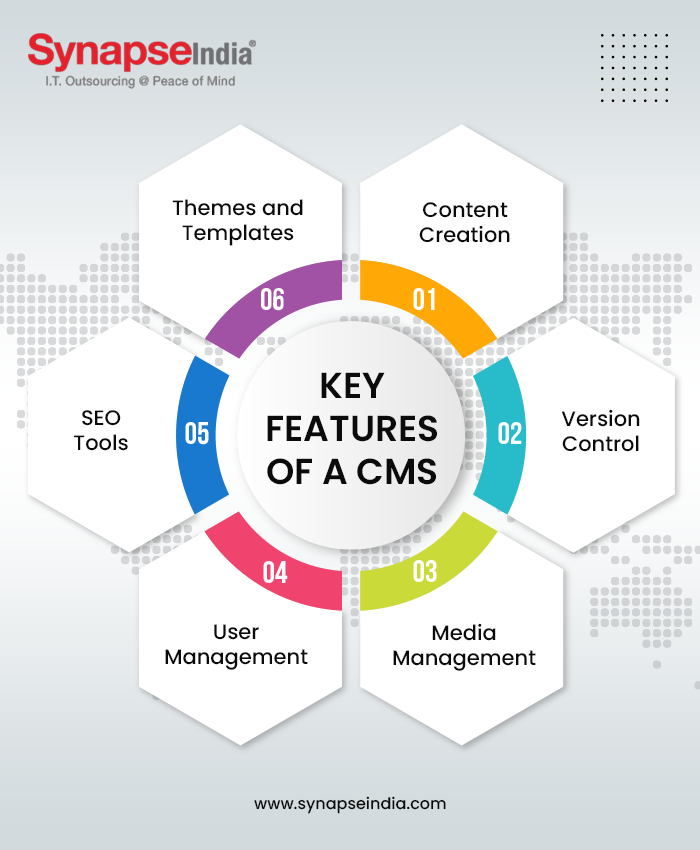 17 Nov 2023
17 Nov 2023.png)
The content regime is the supreme power in this digital landscape. Having a dynamic presence in the market is important for everyone. For this well-established Content Management Systems (CMS) play a crucial role. For anyone’s website, it helps in managing, creating, and updating content. This blog will cover some important aspects of CMS Integration into websites.
A Content Management System (CMS) helps to publish digital content. This software application is designed to create, edit, organize, and publish digital content. It acts as a user-friendly interface for individuals. People who are equipped with various technical abilities manage their websites without needing in-depth coding knowledge. Headless CMS have become indispensable tools for building and maintaining websites, thanks to their versatility and convenience.


Easily create and edit content with a WYSIWYG (What You See Is What You Get) editor, which mimics the appearance of the content on the live site.
Assign roles and permissions to users, enabling collaborative content creation and management.
Maintain a history of changes, allowing you to revert to previous versions if needed.
Upload, organize, and manage images, videos, and other multimedia assets.
Many CMS platforms offer SEO plugins or built-in features to optimize content for search engines.
Customize the appearance of your website with a wide range of themes and templates.
Now that we have a grasp of what a CMS is, let's explore how to integrate it into your existing website and add a blog section.

CMS integration for a blog into your website starts by selecting the right CMS platform. Furthermore, it involves setting up the software and configuring it to work seamlessly with your site. Here's a step-by-step guide:
Choosing the right Headless CMS aligns with specific website needs and goals. There are diverse CMS options include WordPress, Joomla, Drupal, and many more. Before finalizing any consider a few factors like user-friendliness, scalability, and available plugins when making your choice.
After choosing the CMS, you need to install it on your server of web hosting. Few web hosting providers offer one-click installations for common CMS platforms and simplify the process.
After installing the CMS start working on configuration blogging CMS to work with your existing website. This involves a few adjusting settings, connecting to your database, and customization of the appearance to suit your site's design.
Adding CMS to your existing website CMS involves migration of your existing website content into the CMS. It may involve copying and pasting text, uploading images, and working on all the content correctly.
There are wide selections of themes and templates for most of the CMS Integration. Select any of them as per your website's needs and style. Also, you can customize it to match your existing design.
As per your website's requirements, install plugins to increase its functionality. For a blog, you'll need to install blogging plugins that provide features like commenting, social sharing, and categorization.
After all the steps now it’s time to start creating and organizing content. Using a user-friendly interface allows you to add new blog posts, articles, or pages and manage them efficiently.
A content management system is a useful tool to simplify the management of digital content for websites. Integrating blogging CMS into your existing website and adding a blog help you to have an engaging audience, boost your online sales and presence, and help your business to get established in a particular niche. Choosing the right CMS platform lets you have the best content strategy and surge your website to the next level. The CMS integration helps your business to be top-notch and make it visible to your audience. It also adds value to your website and helps in achieving faster results in terms of enhancement of business goals.

